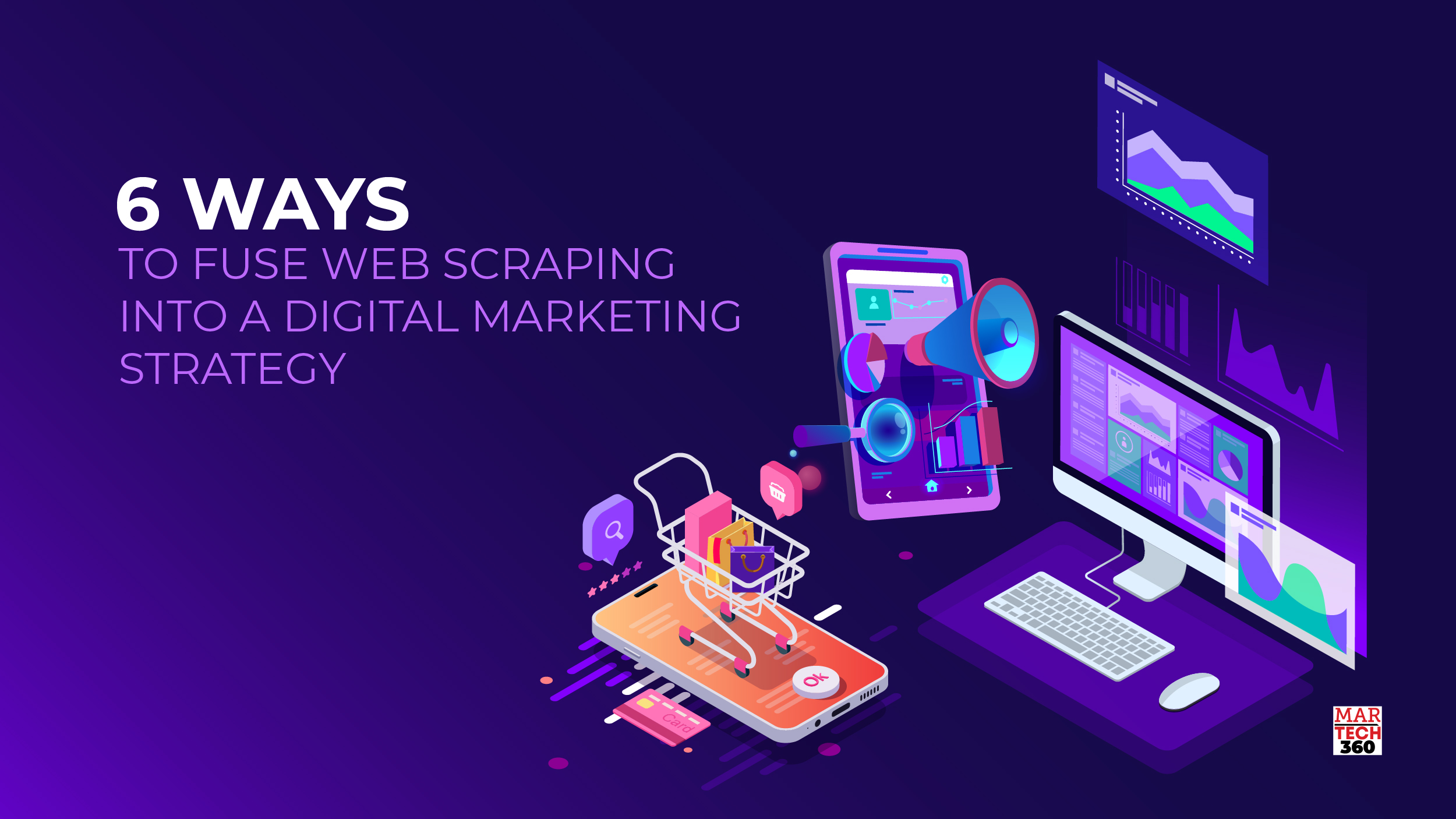Digital marketing is one of the cornerstones of an effective ecommerce strategy. The more you know about your customers and competitors, the better you can adapt your product line and pricing to changing economic conditions.
Web scraping – the process of extracting data from the internet – is a powerful tool you can use to empower your ecommerce business. This short guide outlines how to fuse data extracted from web scraping into several key components of your marketing strategy to attract more customers, drive revenues, and stay ahead of the competition.
Six Ways to Fuse Web Scraping into an Ecommerce Marketing Strategy
Web scraping can be incorporated into any component of an ecommerce marketing strategy. While most marketing plans vary according to the business type, the following standard components apply to most strategies:
1. Product Development
Most ecommerce businesses aim to maximize profits by identifying products that bring in the most revenue.
Web scraping can help you develop a profit-maximizing product line by extracting stock alerts and reviews from smaller competitors. Insights derived from these two key areas help determine high-volume items, enabling you to refine your catalog to include the most profit-maximizing products.
Web scraping can also be used to extract other product information useful for refining your product line and pricing strategy, including:
- Product ID
- Product title
- Current price
- Previous price
- Currency
- Product description
- Image URLs
- Product IDs from URLs
- Other URLs from the page
Also Read: How To Keep Winning Big In The Market Using Competitive Intelligence?
2. Category Development
Web scraping helps you refine product categories by enabling you to extract product reviews and stock level data from competitor websites.
For example, clothing items like jeans come in an extensive variety of styles, fits, and colors. To identify the most profit-maximizing categories, web scraping can be used to continuously monitor a competitor’s website to determine which styles sell quickly and at what specific price points. Once the most popular categories are identified, you can use this information to adjust categories and prices on your website, and create marketing campaigns in line with emerging consumer preferences.
Besides apparel, this technique works exceptionally well at scale for online stores that feature extensive categories, such as electronics, sports equipment, and health supplements.
3. Price Optimization
Getting the most profit-maximizing price is critical to ecommerce success. To achieve that goal, some industries engage in a strategy called dynamic pricing to account for supply and demand factors to list their products at the most competitive market price.
There are two main types of dynamic pricing:
Supply-Limited Dynamic Pricing
Hotels, flights, and concert tickets are examples of products with limited or expiring supplies. Supply-limited pricing enables businesses to change prices based on customer behavior and stock availability to arrive at the highest price they can charge.
Price Matching
Price matching monitors your competitors’ pricing and uses an algorithm to offer the most competitive price.
Here is an infographic that illustrates this mechanism in action:

Source: Oxylabs
Web scraping is the dominant data extraction method used in dynamic pricing strategies. Scrapers are deployed to crawl, extract and parse data from the competition to change prices for maximum profits.
4. Customer Persona/Avatar Creation
Customer avatars or personas are fictional representations of your ideal customer.
Creating avatars is critical to developing marketing messages that speak authentically to your customer base. Attracting the best customers for your products is essential to ecommerce success because happy customers generate positive reviews, and that brings you more future customers.
Businesses use web scraping to obtain data from anonymized customer reviews and comments on other public websites to determine what products customers love and what they’d like to see improved. Additionally, you can develop key messages directly from their comments to create precision messaging for use on your website, product descriptions, and online advertising campaigns.
5. Improving SEO Ranking
An effective search engine optimization (SEO) strategy increases the visibility of your website on the results pages of major search engines. To understand how web scraping can maximize your SEO efforts, it’s helpful to learn how SEO works.
Google, Bing, and other search engines use scripts to crawl the web and collect information (ranking factors) from website pages, including keywords, page speed, on-page optimization, internal links, external links, and more. Since web scraping is a similar process that crawls websites to extract information, it can be used to track page rankings and determine high-scoring page titles, keywords, and descriptions.
Besides increasing your SEO ranking, data extracted from web scraping is valuable for developing effective “inbound” marketing strategies that attract users to your website. Insights obtained, such as high-ranking keywords, titles, and descriptions can be fused into blog posts, articles, search engine marketing campaigns, online advertising on third-party websites, and social media advertising.
6. Competition Monitoring
Competition monitoring online is similar to a physical marketplace. Since the advent of commerce, shop owners and merchants have continuously observed other businesses to determine the most popular products and lowest prices in order to stay competitive.
Web scraping helps you to do that on a massively larger scale across the web by enabling you to gather data on:
- Best-selling products and popular categories
- Brand mentions in social media and news websites
- Product comments and reviews on ecommerce websites and marketplaces
Fusing this data into your marketing plan is critical to understanding your position on the ecommerce landscape. Strategic web scraping is an essential tool that enables you to extract that data for use in precision marketing strategies that ensure your business stays competitive.
Web scraping is accessible to all business types and sizes
Web scraping is no longer the domain of large tech-oriented businesses. Ready-to-use tools make customized data extraction fast and easy for ecommerce businesses of all types and sizes – including yours.
Ready to see how it works? Watch a demonstration on our free on-demand webinar Web Scraping for Business: Why Every Company Should Do It.


Comments are closed.